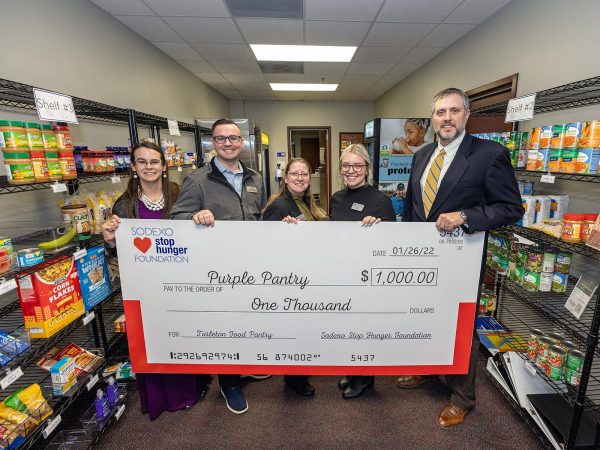OP-ED: Abstinence only is NOT the key
January 31, 2018
According to 2015-16 survey done by the Texas Freedom Network, only 17 percent of public schools in Texas teach safe sex. The other 83 percent of schools teach “abstinence-only” or do not have a sex education program at all. Concurrently, the Center for Disease control ranked Texas as tied for fourth in Teen Birth Rate. However, also according to the CDC, Texas comes in first with the highest rate of repeat teen pregnancies.
In 2015, the Massachusetts Senate passed a bill that required all public schools teach sex education in a medically accurate and age appropriate way. According to the same CDC report that ranked Texas as the fourth highest, Massachusetts is ranked as the state with the lowest teen pregnancy rate. The statistical correlation between sex education and the teen pregnancy rate is blatant.
In 2010, Texas and the national government spent $2.9 billion on unintended pregnancies. While $2 billion was paid for the by the national government, Texas paid $842 million on unplanned pregnancies. Regardless of any bias, the teen pregnancy rate is an obvious issue in Texas.
The argument is made that it’s not the state’s place to teach children about sex-ed. However, according to the data, parents are not teaching their children either. The numbers show that teens are unaware of how to take preventative measures to avoid pregnancy.
The lingering fear held by parents is that once a teen takes a sex education course, all they’ll do is go out and have sex. However, I was once a pubescent teenager, too. I promise the last thing any teenager wants do in school is have a teacher, who is oddly reminiscent of their grandma, demonstrate how to put a condom on a banana. These classes are teaching vital sex education facts. Plus, the data shows that teenagers are already going out and having sex, they just aren’t doing it safely and teenagers are getting pregnant.
Unless a parent teaches their children about safe practices, who knows where the information will come from. The internet and social media are riddled with incorrect facts. For example, it’s a common misconception that a woman can not get pregnant while menstruating. This is technically correct, however, sperm can survive for several days. So unless a condom is used, fertilization might happen several days after menstruation. The chances are low, but they are there.
Planned Parenthood is also another vital tool to help combat teen pregnancy. Contrary to the anti-Planned Parenthood rhetoric, only 3 percent of what planned parenthood does are abortions. The other 97 percent is STI/STD testing and treatment, contraceptives, cancer screenings and other women’s health services. Whether you like it or not, Planned Parenthood is a contributing factor to lowering the teen pregnancy rate and accidental adult pregnancies.
If you are vehemently opposed to Planned Parenthood, then you should support sex education in public schools. In order for the number of abortions to decrease, teenagers need to be aware of how to avoid pregnancy. If you believe that abortion is wrong, have your children properly taught about safe-sex and how to avoid unwanted pregnancies.
In a survey of 4,134 teenagers from 2011-15, the CDC reported that 42 percent of females and 44 percent of males engaged in sex at least once. While you many not believe that it is anyone’s job to teach teenagers about safe sex, the hard fact is that regardless of whether or not they get taught, they’ll have sex. Regardless of your religion or political leaning, people have sex, teenagers and young adults especially.
If you abstain from sex you wont get pregnant. If you avoid drinking and driving you wont get a DUI. If you don’t speed you wont get a speeding ticket. If you don’t steal you wont get caught stealing. These are all things people can avoid doing, but still do. Telling an individual not to do something is simply not enough.
http://a.tfn.org/sex-ed/index.html#reports
https://www.guttmacher.org/report/public-costs-unintended-pregnancies-and-role-public-insurance-programs-paying-pregnancy
https://www.cdc.gov/nchs/pressroom/sosmap/teen-births/teenbirths.htm
https://www.cdc.gov/nchs/data/nhsr/nhsr104.pdf




TTV • Feb 1, 2018 at 9:56 AM
In a recent survey, most parents and even most teens said that abstinence until in a committed loving relationship was ideal. Perhaps we can build on these shared values, and move Texas from abstinence-only education to abstinence-plus-marital education–teaching family planning and disease prevention in a marital context. http://www.treble-up.com offer a free booklet on marital education that goes through each type of family planning, the most common reasons for failure, and how to double- or treble-up on methods where possible to improve the odds. Check it out!
One thing we must do is change the Texas Education Code which continues to state that abstinence is “100% effective” against pregnancy and disease. It is not. Rape happens, and STDs can be caught at birth, and transmitted by kissing, outercourse, shared needles, and the like. There is a reason Texas has the third highest rate of HIV in the nation, and this dangerous myth and our lack of education are huge contributors.